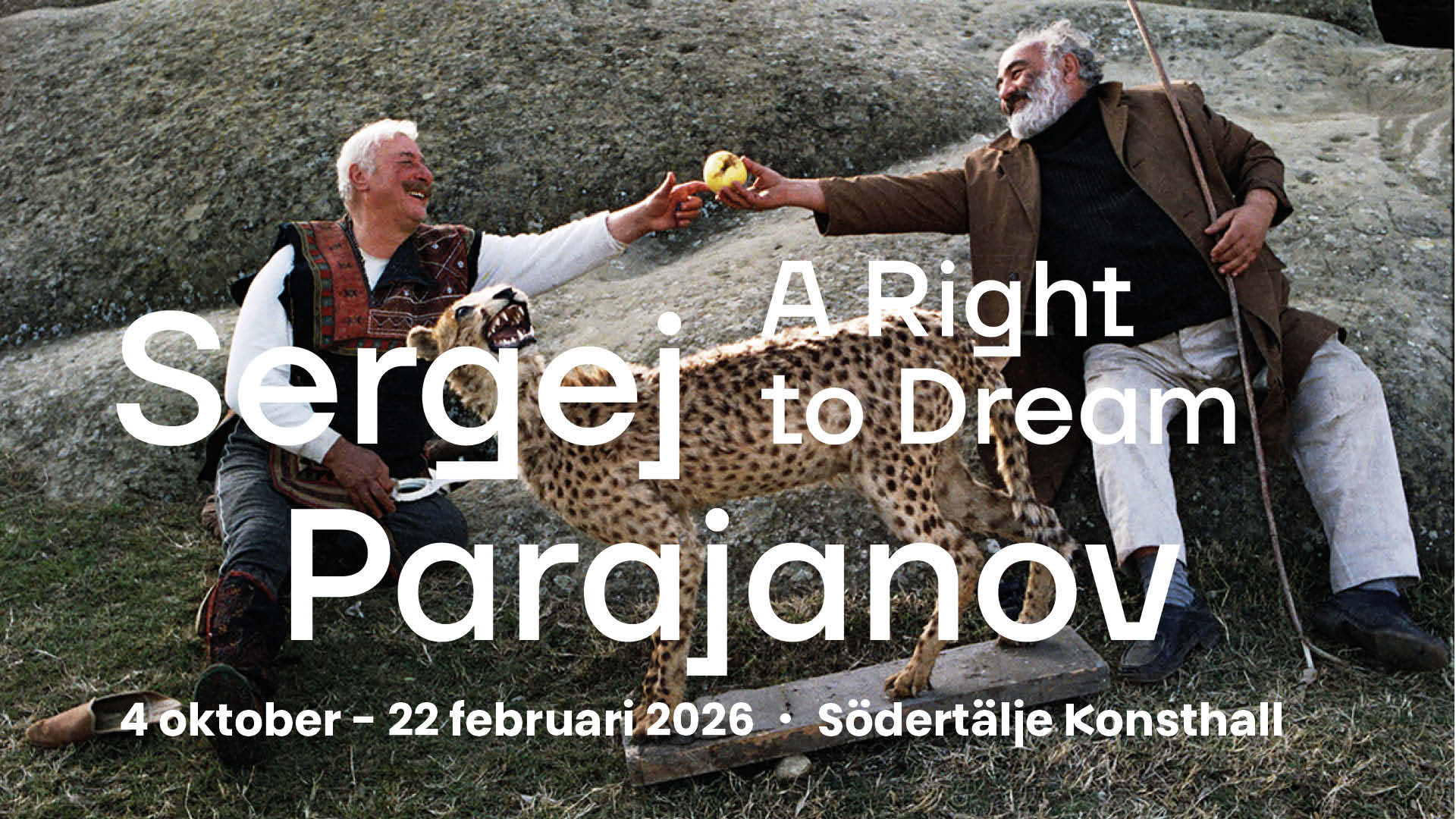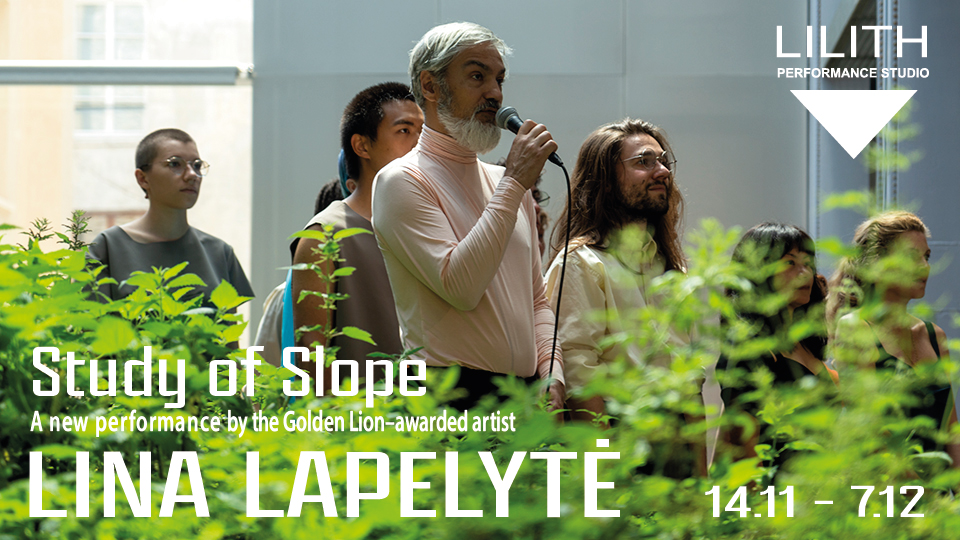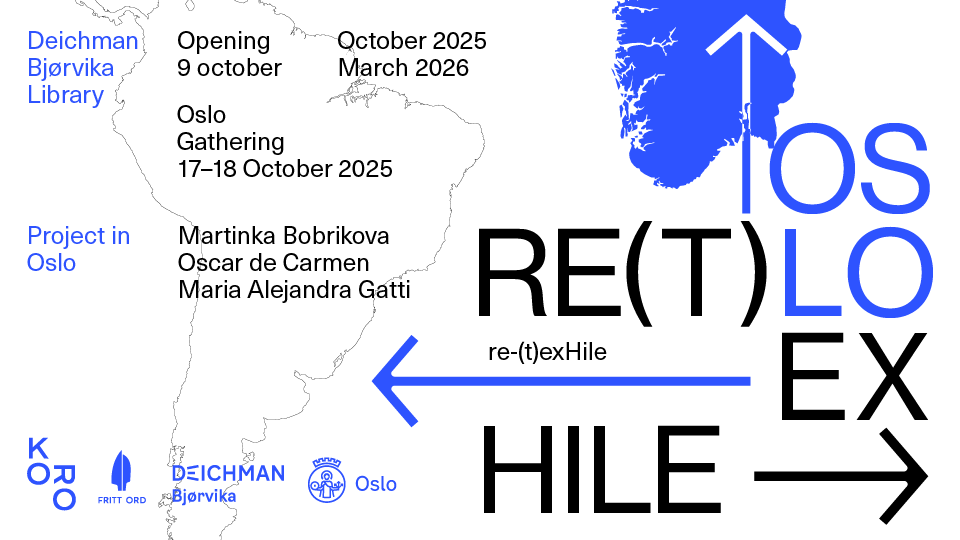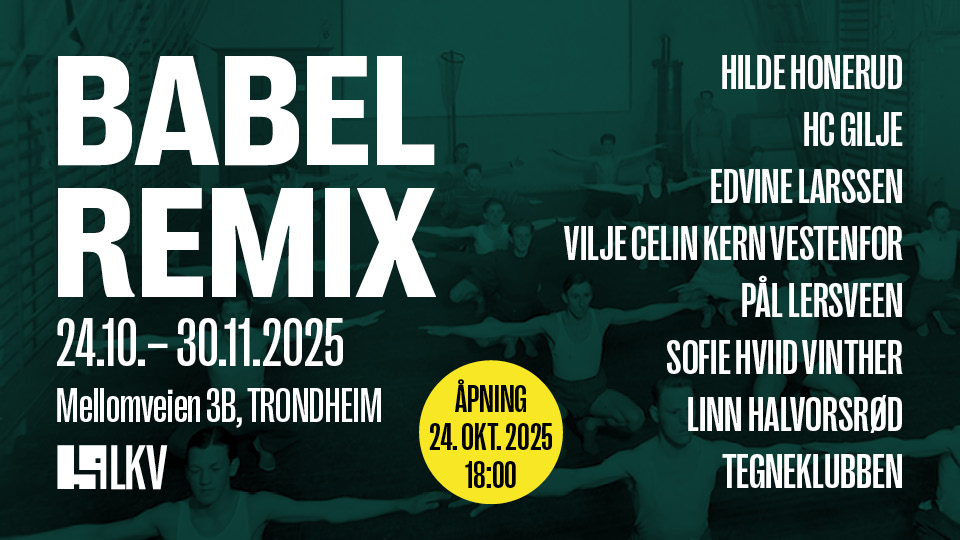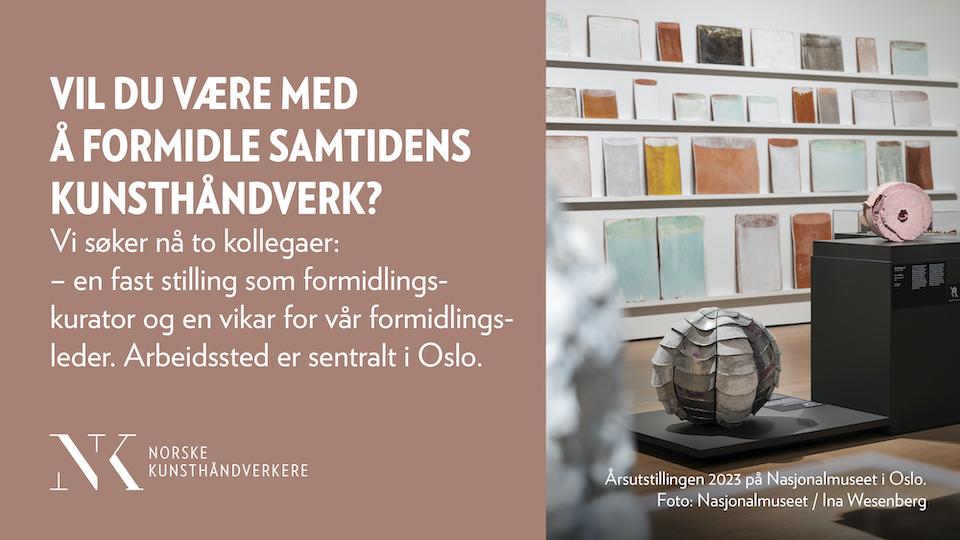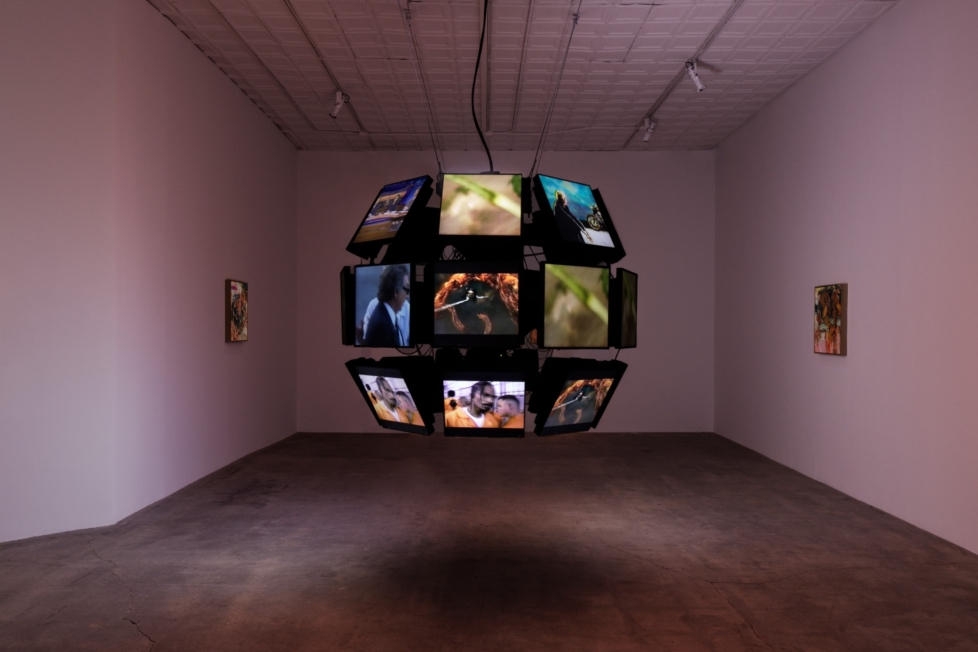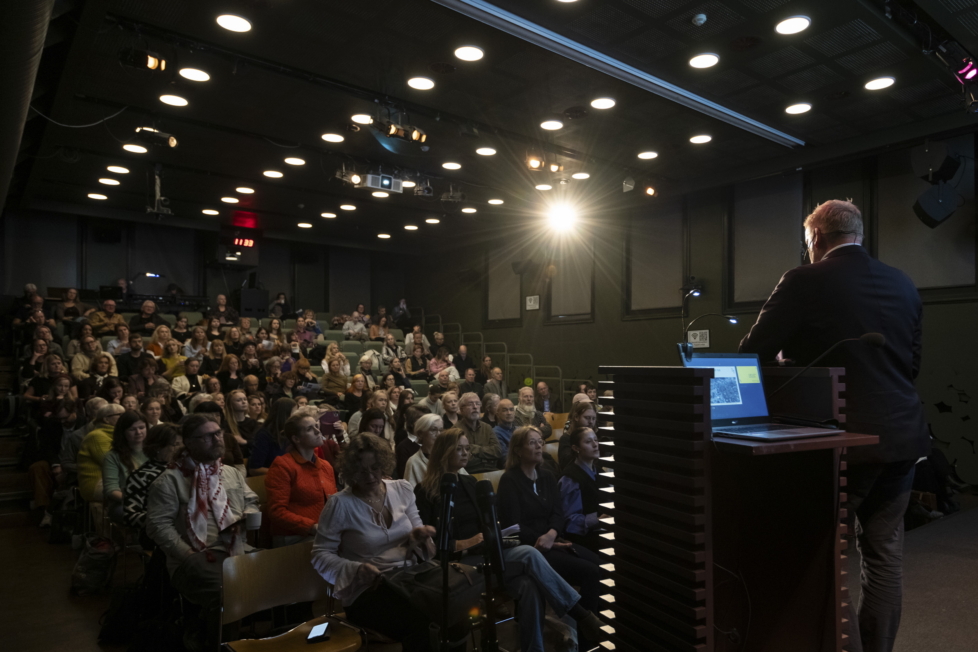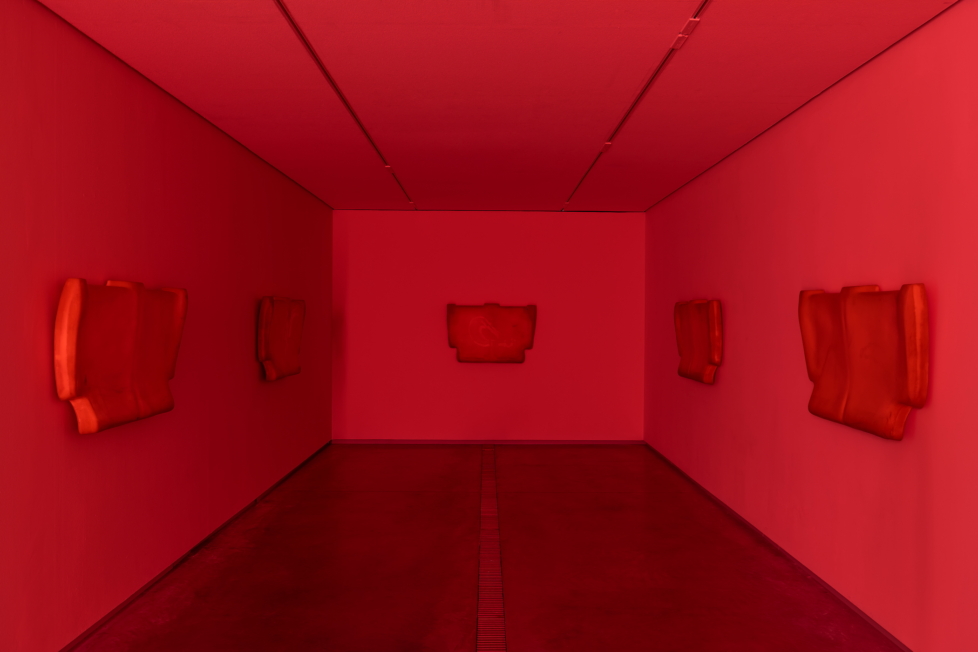
The science fiction story often presents an accelerated and reconfigured version of the specific historical conditions under which it was conceived. With its biotechnological fantasy about the invention of an emotional network, Melanie Gilligan’s sci-fi mini-series The Common Sense (2014) clearly builds on present-day ideas about networked man. The narrative takes place in a not-too-distant future where people can link up to the emotional responses of others by means of a device fastened inside their mouth. The society presented in Gilligan’s series is our own sharing economy taken to its furthest extreme, a dystopia where even our emotions have been monetised. A telling scene takes place in a customer centre where a young unemployed woman is exploring her financial options: “I have heard people will pay to feel unemployed?” she asks hopefully. The reply is both scary and comical: “That area is very competitive”.
The Common Sense is one of the works on display in the exhibition Nervous Systems – Quantified Life and the Social Question at Haus der Kulturen der Welt in Berlin. According to curators Anselm Franke, Stephanie Hankey and Marek Tuszynski, the exhibition seeks – with its wealth of information boards and works by artists such as Jon Rafman, Harun Farocki, Goldin+Senneby and Lawrence Abu Hamdan – to show “the transformations of lived experience in the shifting terrain of human-machine interaction”. Like other exhibitions presented at the HKW in recent years, Nervous Systems is ambitious and dense, consisting of equal parts art and research documents. It is gradually becoming clear that the HKW’s and its head curator Franke’s herculean series of exhibitions and seminars aims at constituting a vast compendium of the relationships between biology and technology, culture and nature, and how these entities have been processed in science and art during the last century. Indeed, the overall title of the 2015–18 exhibition programme is 100 years of now.

Among other things, Nervous Systems monitors the evolution of big data processing right from early twentieth-century criminal records and social mapping projects to our present-day algorithmic information processing. The idea of an analogy between information networks and the nervous system of the human body was established in earnest in the post-war years with the development of cybernetics, which pointed to the similarities between mechanical control systems and physiological processes. But at what point does the idea of the nervous system stop being simply an analogy? In 1964, media theorist Marshall McLuhan stated that “In the electric age […] our central nervous system is technologically extended to involve us in the whole of mankind and to incorporate the whole of mankind in us”. There is only a small step from McLuhan’s theory of how media act as “extensions of man” to Gilligan’s future scenario where all bodies are integrated in a network.
Everything can be quantified, for all the elements that make up life can be reduced to information, whether in the form of neurological, biological, genetic or statistical data – this is the hypothesis that serves as the starting point of Nervous Systems. Thus, the subtitle Quantified Life and the Social Question deals with its social consequences. One example from the early 1900s is provided by Mr and Mrs Gilbreth’s studies of workers’ movements, which aimed to maximise efficiency during factory work, where unnecessary movement meant that money was lost. The Gilbreths’ “kinetic economy” is recreated as a choreography in Julien Prévieux’s short film Patterns of life (2015), where ballet dancers perform scenes from the history of behavioural adjustment as a dance that progresses from “a science of motion to an advanced capitalism in motion”, as the narrator puts it.
A NERVOUS SYSTEM
The documentary film World Brain (2015) by Stéphane Degoutin and Gwenola Wagon demonstrates that the ideas about a linked-in, global consciousness have to a great extent already become reality. If aliens arrived on Earth – so speculates the philosopher Pierre Cassou-Noguès in the film – they might first notice a kind of brain which co-ordinates electric signals transmitted through cables across the planet’s entire surface. In another scene the camera pans past endless rows of computer servers, gliding past wires and blinking lights as the narrator’s voice explains: “This is where we live. These servers store our Facebook friends, the articles we read, our Google search history, our pictures … every part of our online life, that is, our lives, full stop.”

The dark and paranoid undercurrents of World Brain also reverberate throughout Nervous Systems. The system outlined in the exhibition is indeed nervous, scanning for patterns in order to predict and minimise risk and in order to identify deviant behaviour. !Mediengruppe Bitnik’s reconstruction of Julian Assange’s room in the Ecuadorian embassy in London constitutes an apposite back-drop to the rather more paranoid tendencies of the information age.
At times, the exhibition itself seems to be based on a paranoid method where everything must be connected to everything else. In its form, too, Nervous Systems is an exhibition of Big data, so overloaded with information that exhausted visitors might well need some algorithmic assistance to make out its main points. For example, there are far too many curios from the history of technology and too many thematic tangents. Did you know that the inventor of the polygraph lie detector, W. M. Marston, was also the man behind the comic book series Wonder Woman, and that he used that series to make his invention more widely known? The curators have also crammed far too many artworks into the space, many of which we only get small samples of. Yes, Henrik Olesen’s How Do I Make Myself a Body (2008) touches on the link between data processing and behavioural adjustment, addressing as it does Alan Turing as a pioneer of data technology and a victim of prosecution and enforced treatment for being a homosexual; but when a single collage is taken out of an entire series, the work is reduced to a mere footnote.
Matters are not improved by the fact that the exhibition architecture consists of an open grid made out of scaffolding-like steel rods with boards and screens mounted in between. This open-plan solution invites a distracted, flickering kind of reading, but it also means that the soundtracks of individual works bleed into each other. The result is that at any time you have at least two narratives in your head – not unlike the people in Gilligan’s mini series. On previous occasions I have greatly appreciated getting lost in the information labyrinths of the HKW’s encyclopaedic exhibitions, but in Nervous Systems you quickly reach your threshold.

A FEEBLE GROAN
Nervous Systems culminates with the activist group Tactical Technology Collective’s The White Room. In this Apple Store-like section, white-clad “sales assistants” introduce visitors to a range of technological gadgets. Among their wares you will find TTC’s own Trackography app, which shows you which third parties receive data about you when you read an article on a news site. But there are also examples of rather more eerie and disturbing inventions. It would not come as a surprise to find the mouth-chip that allows one to connect to the emotional network of Gilligan’s The Common Sense lying next to the iris scanner EyeCloud, used to identify refugees, or the remote-controlled prophylactic Fertility Chip.
Such technological determinism has a counterpoint in the form of rather more optimistic works from the early 1970s. Today, conceptual artists such Stephen Willats and Charles Gaines seem almost touchingly naïve in their enthusiastic espousal of informatics as an artistic method. Douglas Heubler and On Kawara are other examples of artists who put our present-day exchange of data into perspective. Heubler’s Variable piece no. 4 from 1973 is a classic instruction-based work which encourages members of the audience to write down a secret on a piece of paper, give it away, and then receive a secret from someone else. There is obviously a social aspect to such exchanges, but with a vocabulary inspired by information theory (“a transposition of ‘information’ from one location to another”), the main point here seems to be to reduce confession to a matter of data processing. In this context, Kawara’s I am still alive series – consisting of daily telegrams containing only the message “I am still alive” – becomes a kind of sober predecessor of the status updates of social media. However, it also takes on a more ominous quality that fits in well with the dark overall mood of the exhibition. The wall text tells us that the Icelandic-American artist Paa Thayer registered a Twitter account in Kawara’s name, which uses a programmed “Twitterbot” to publish the message “I am still alive” every day – and continues to do so even after Kawara’s death in 2014, like feeble groans from the ghost in the machine.

